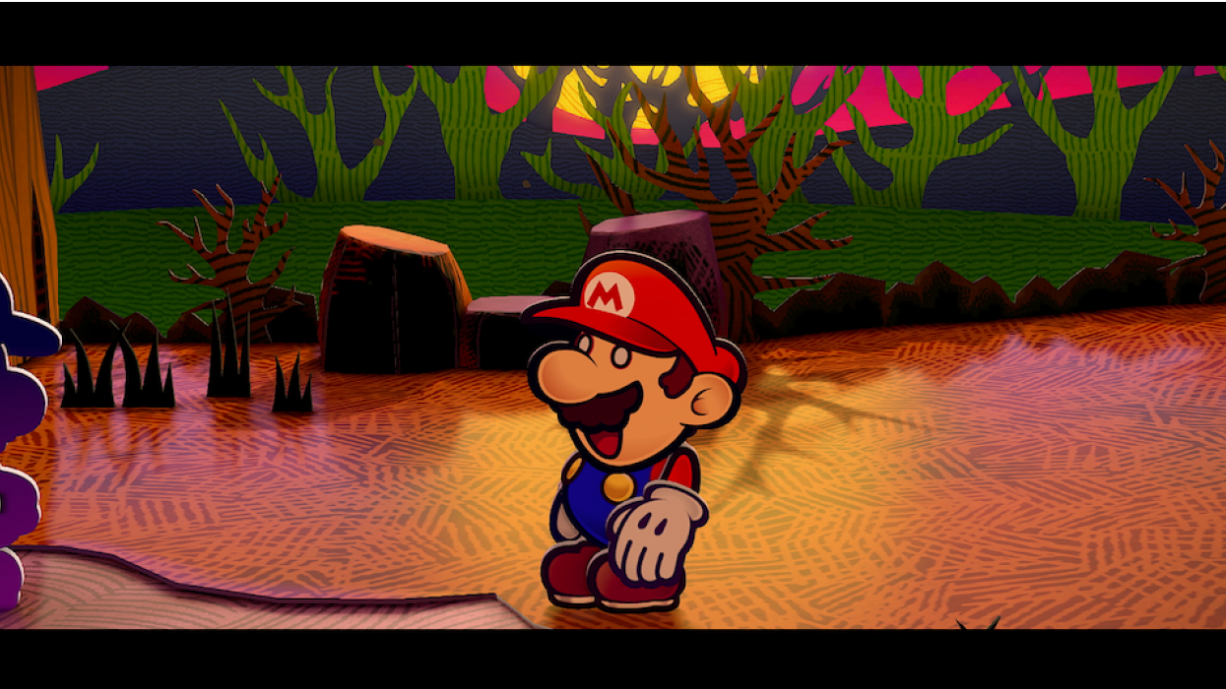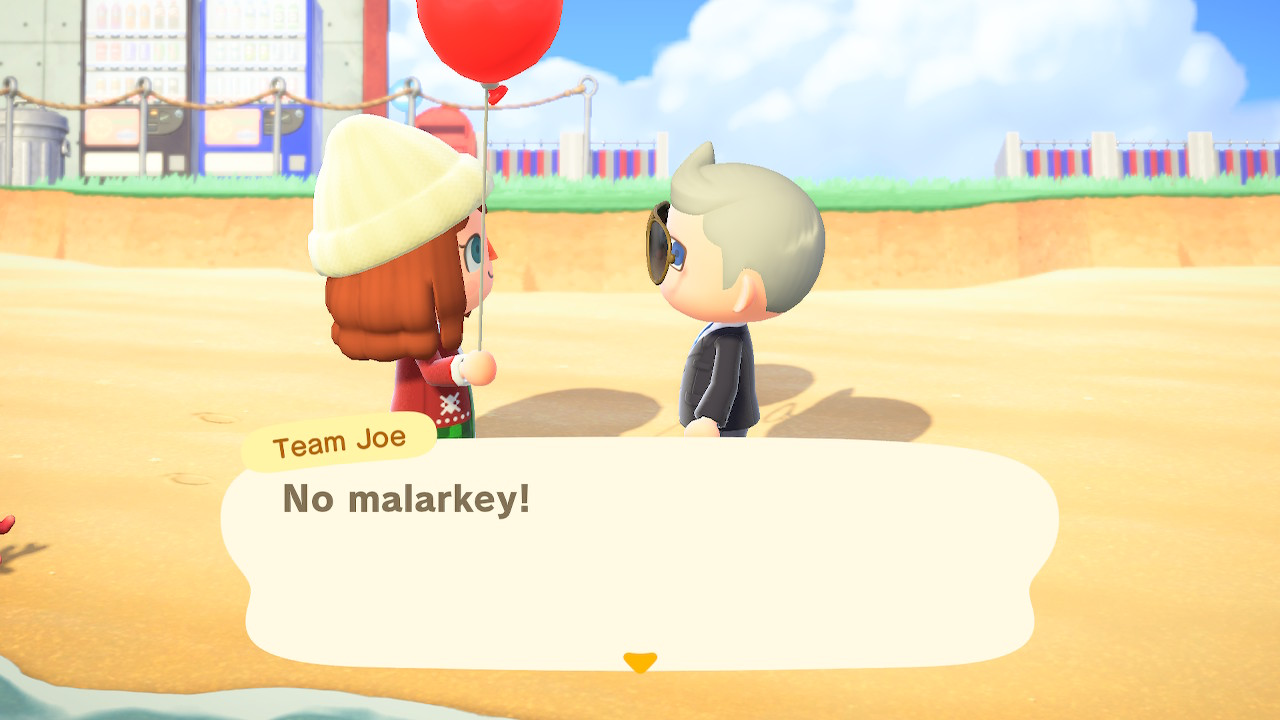Paper Mario: The Thousand-Year Door Papers Over Its Problems
Kat (Pixel a Day), Guest Contributor
You’ll never appreciate how tough it is to critique a beloved Mario game until you sit down and try to critique a beloved Mario game. Consider how you might approach, for example, the task of writing a thousand words about the 2024 remake of Paper Mario: The Thousand-Year Door.
You might start, straightforwardly enough, by setting the scene: a trip to the seedy island of Rogueport finds Mario rescuing a kidnapped Peach and preventing a catastrophe involving a mysterious door that opens once every thousand years. If you’re like me, you’ll also – for the sake of full disclosure – acknowledge that you have no prior experience with any of Mario’s paper-based adventures, including the 2004 original.
Once that's out of the way, you may finally find yourself face to face with the big question: how many introductory words do you have to write before you feel comfortable enough to say that Paper Mario: The Thousand-Year Door is – for the most part – an insufferably boring game? Probably about this many.
You may also feel tempted to pacify the now-incensed reader by writing something like, “credit where credit is due, though”, before meticulously laying out a mile-long line of breadcrumb compliments to show that you are not one of those ‘unreasonable’ critics who wallow in toxicity. The visuals are crisp, the remake introduces numerous quality of life changes, you can name your Yoshi companion, there are some brilliant laugh out loud moments (the scary-looking thwomp who challenges you to a battle - only for that battle to be a pop quiz - is a highlight). See, reader! I can say nice things!
Then you’ll probably remember that the only people reading long-form video game criticism are other video game critics, who likely won’t take any of this too hard (and, in any case, are busy with their own problems). At which point you might toss the caveats, equip your Power Plus badge, wind up your hammer smash and just go for it. It’s-a-me, the destroyer of your childhood nostalgia!
Screenshot by the author.
Before I get to the crux of my issues with Thousand-Year Door, I’ll admit I found a lot to like in its battle system, which is inventive and engaging, if not challenging. There’s plenty to juggle - normal attacks, stronger attacks, special moves, items, enemy types, turn order, timing mini-games, companion abilities. The ‘theatre of war’ is an idea so brilliant I hope someone at Nintendo got a raise for it. Fights happen on a stage with an audience watching, which gives rise to a variety of interactions, from props falling on you to audience applause causing faster meter refills.
Overall, the battle system is not deep, but there are enough gimmicks to at least keep your eyes on the screen. I’ve encountered much more complex RPG battle systems that feel lifeless in how they play out compared to this game’s spritely bag of tricks. Frankly I would not complain if the inevitable Final Fantasy IX remake has Zidane and co. dodging falling branches and bird poops in timing mini-games as they battle a super-powerful evil tree at the core of the world. Thousand-Year Door’s battle system is neat, and it deserves to be embedded in a more interesting game.
Because outside the battles (and here, dear reader, is where the hammer must finally come down), the bulk of Thousand-Year Door can only be described as trudging. Its core movement system is not fun, neither are its missions particularly clever or inventive. One exception is chapter four, in which you get possessed by a ghost, become a shadow, and have to team up with a former enemy to learn the spook’s name and defeat it. But the first three of its eight chapters drag on twice as long as they need to, one of them requiring you to engage in twenty mind-numbing arena battles in a row. This isn’t helped by the visual design of its environments, which surprised me only in how little they surprised me. The Great Tree, for example, is a forty minute-long face-off with déjà vu as you try and remember which sequence of drab grey pipes and drab grey rooms (all decorated with the same identical tree trunk wallpaper) will take you to your destination.
Don’t get me wrong, the papercraft aesthetic rules; I played this game on handheld just so I could come as close as I could to pressing my eyes directly onto the clean lines, vibrant colours and textured dioramas. I’ll say it again, because I mean it: the papercraft aesthetic rules. But Thousand-Year Door’s mistake is its attempt to ride on the charm of that one gimmick – everything’s made of paper! – for thirty hours. The occasional delightful paper-scrunch scene transition can’t hide the fact that much of this game is just walking left and right, through uninteresting environments, following directions yapped at you by NPCs. I wish I were exaggerating - the majority of chapter 6 is literally walking back and forth doing odd jobs across five train carriages. When you peel back the cutesy wallpaper, you realise that Thousand-Year Door is not so much a game as a twenty-hour long checklist with fights in between.
That’s not an inherently bad thing. You could say most video games are checklists, if you boil them down aggressively enough. But great games don’t feel like a checklist; a great Mario game makes you want to race, jump, smash - because those things are fun to do. I did not on a fundamental level enjoy the majority of what Thousand-Year Door made me do (walk over there, fetch a doodad, give it to the Blorko, walk somewhere else, talk to another Blorko, fetch another thing from where you literally just were, repeat, repeat, repeat…). I found that I could just about tolerate it all by turning off the cloying soundtrack, putting on some Daft Punk and blasting through the game at top speed with my brain on power saver mode.
No one is sadder about this than I. My experience with Mario Kart, Super Smash Bros and the Super Mario platformers – most of which I adore, some of which shaped my childhood – has been that Mario is for everyone, a bundle of pure delight that holds a promise of simple yet satisfying fun, no matter the age bracket. I did not find this true of Thousand-Year Door.
Most bewildering of all is the lack of reasonable critical contention about the merits of this game. The original and remake are both widely praised, and despite the incontrovertible evidence (low difficulty, colourful visuals, repetitive gameplay) that this is clearly a game for children, many reviews strongly recommend Thousand-Year Door for general audiences. This is simply astounding to me. I would recommend this game to two groups of people only: kids under 12, and those who played the original as a kid and want a hit of nostalgia. For anyone else, I wouldn’t dream of advocating for an over-long infantile RPG stuffed with tiresome filler, useless B-plots, and lackluster environment and quest design. Even if it does, occasionally, have its moments (I named my Yoshi Ginuwine).


